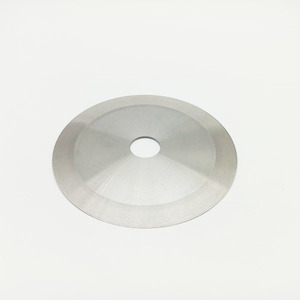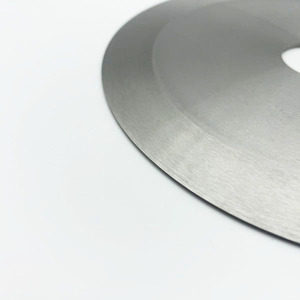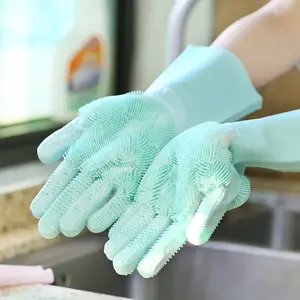(70 products available)











































































































 Ready to Ship
Ready to Ship










 Ready to Ship
Ready to Ship















































Rubber is a versatile and elastic material widely used to manufacture various products. As delineated below, the materials can be classified as natural rubber, synthetic rubber, and thermoplastic elastomers.
Natural rubber is derived from latex, a milky fluid extracted from the sap of rubber trees, primarily the Hevea brasiliensis species. It has remarkable elasticity, durability, and resistance to wear and tear. It is one of the most commonly used materials in products such as tires, industrial belts and hoses, seals, gaskets, footwear, and sports equipment.
Manufactured using petroleum-based chemicals, synthetic rubber was developed mainly because of the constraints associated with using natural rubber. While several types exist, the most common are styrene-butadiene rubber (SBR), butadiene rubber, and nitrile rubber. Due to its water and chemical resistance, nitrile rubber is primarily used in gaskets, seals, and hoses. SBR is employed in low-cost tires and industrial flooring.
Rubber-like materials, TPEs, are made from polymers that can be molded when heated and will return to their original shape upon cooling. Adorned for their ease of processing and recyclability, TPEs are popular in automotive parts, consumer goods, medical devices, and adhesives. One prominent subtype is thermoplastic urethane (TPU), widely used in applications requiring abrasion resistance.
The elasticity, durability, and versatility of rubber products make it widely applicable for multiple use cases. Below is a delineation of some of the most popular applications and their significance.
Observably, rubber tires could be the most ubiquitous use of rubber. In addition to providing traction and durability, tires absorb shocks from the road, ensuring a smooth ride for passengers. Beyond tires, rubber is used in hoses, belts, seals, and gaskets in vehicles. The expansion of the automotive sector is inextricably linked to the growing demand for tires, and hence, the demand for rubber. This drives a significant portion of the global market. Further, the demand is predicted to surge further as electric vehicles and high-performance tires demand more advanced rubber compounds.
Rubber's resilience to chemical exposure makes it invaluable to industrial settings. Rubber hoses transfer fluids, while belts enable power transmission. Rubber seals and gaskets play a critical role in preventing leaks in machinery and equipment. In manufacturing and construction, rubber mats and flooring provide safety and durability. The industrial segment is a critical consumer of high-performance synthetic rubber, driving innovation and the development of specialized rubber compounds.
Rubber is also prominent in consumer goods, ranging from everyday items to specialized products. Household goods such as gloves, mats, and sealing containers are manufactured using rubber. Moreover, rubberized grip surfaces enhance the usability of tools and gadgets. Further, in personal care, latex condoms exemplify a high-demand rubber product.
The healthcare sector significantly contributes to rubber's commercial value, given its indispensable role in manufacturing medical supplies. Latex and synthetic rubber are used to make surgical gloves, catheters, and medical tubing. These materials' elasticity, sterility, and durability make them ideal for medical applications. As the demand for healthcare services increases, so does the demand for high-quality rubber.
Durable, elastic rubber materials are suitable for sporting goods ranging from balls to footwear. Rubber soles designed for optimal grip and durability are a prime material in athletic shoes. In addition to this, rubber mats provide cushioning for workouts and enhance safety in fitness applications. Also, rubber components are vital for equipment longevity and performance in protective gear like helmets and pads.
A business owner can help ensure that customers get quality items by knowing the following details when purchasing rubber products.
Business owners should consider the market they serve before purchasing products like large rubber bands online in bulk. Basketball-sized rubber bands won’t sell to small pet owners; they are suitable for large-scale, industrial customers. These customers include agriculture, crime scene control, shipping and packing, and warehouse organization. The bungee-type rubber bands are also practical for engineers with large design projects. The bucket-sized rubber bands are suitable for large-scale organization or storage solutions.
Rubber products are mainly made of three materials: natural latex, synthetic elastic, and thermoplastic elastomers. Each material has its pros and cons. For instance, natural latex is biodegradable. However, some people are sensitive to it. Synthetic rubber is manufactured using petroleum and would appeal to eco-conscious customers because it is often derived from petroleum-based elastomeric materials. Finally, TPE is suitable for customers who don't want latex products. It's also the most affordable elastic material usable for many different products.
Buyers should also consider various rubber band sizes and colors available. Generally, the sizes should match the natural usage of the rubber products. For example, products like rubber bands extension straps and hair accessories are small. On the flip side, items like rubber balls and mats are larger. Concerning colors, business owners should stock fast-moving shades like metallic and pastel rubber products and the conventional black, red, and blue.
The intended usage of the rubber products will clear the customers' practical needs. For example, if clients use rubber for arts and crafts projects, functional products like latex paint and gloves are suitable. Customers who use rubber for exercise will prefer resistance bands, mats, and yoga balls. Those who need rubber products for repair services will want practical items like rubber cement.
Despite the difference in materials used, the processes of manufacturing rubber products are closely related.
Natural rubber is sourced from the sap of rubber trees. Once harvested, the sap (latex) is then purified to remove impurities. The latex is treated with chemicals that coagulate the proteins to form solid rubber.
The coagulated rubber is dried to remove excess water. After that, the dried rubber is milled with other materials to obtain a homogenous mix. The milling also breaks down the rubber to ensure even distribution of additives.
To enhance the performance and durability of the rubber, manufacturers usually add various materials. Common additives include carbon black, sulfur, accelerators, antioxidants, and oils. Carbon black reinforcement improves tensile strength, while sulfur will help crosslink the rubber molecules during curing.
After mixing, the rubber is shaped into the required product using suitable machinery. Common methods include molding (for tires, gaskets, etc.), extrusion (for hoses, seals, etc.), and calendaring (for rubber sheets).
Curing (vulcanization) involves heating the rubber mixture to allow sulfur crosslinking. This process solidifies the rubber and increases its elasticity, strength, and heat resistance. Curing is typically done using molds, autoclaves, orEtc.
Once cured, the finished product undergoes inspection, testing, and quality control. If necessary, additional finishing processes (trimming, grinding, etc.) are used to meet required specifications. Only products that pass the quality tests are packaged and prepared for distribution.
A1. Entrepreneurs should prioritize quality aspects such as sturdiness, flexibility, and weather opposition when choosing rubber items. Modern materials have advanced these properties, making products tougher and stronger. Also, business owners should look for items manufactured with eco-friendly materials to appeal to the green consumer.
A2. The adoption of computer-aided design and automation has improved the accuracy and speed of production. Moreover, innovative materials have made mats stronger and more flexible. Additionally, upcycled materials have made the industry more eco-friendly.
A3. Buyers should focus on mat features such as shock absorption, water resistance, and sound dampening. Furthermore, indoor mats should have anti-slip properties. The layout, size, and color of the mats are also important.
A4. Yes, recent innovations have introduced methods like synthetic adhesives and sealants. Moreover, some manufacturers now provide lifetime repair services. Additionally, there are eco-friendly ways of recycling and refurbishing worn-out rubber products.
A5. Caring for rubber mats can extend their lifespan by 2 to 3 years. Moreover, regular maintenance can make mats look new and boost their functionality. In addition, the mats will retain their aesthetic appeal.